Life post-NCLT

When people in the know of things look up at the global steel firmament, they say they see 2 stars shining bright. One is South East Asia and, the second, is, hold your breath, India. But how can that be, sceptics ask, with the kind of challenges this country’s steel industry is grappling with? What about its raw material issues? Cancellations of or issues in iron ore and coal mine allocations? Delays in land acquisition and obtaining environmental clearances? Increased logistics and raw material costs and higher operating cost for companies?
Does the very introduction leave a bitter taste in the mouth?
Well, we can silence the sceptics by saying the pros truly outweigh the cons in this argument. As said Dr Edwin Basson, the Director General of the World Steel Association, “We think that India will be the undoubted star in terms of steel demand growth. We forecast an increase of 5.5 percent this year (2018) and a further 6.0 percent in 2019, so there are clearly good prospects in India and in South-East Asia too. These are the two bright spots we see in the next few years. However, we should be clear that in India there are several bottlenecks on the production side that have to do with land use or steel market development or logistics issues, but these are normal for a developing economy at this phase in its growth.”
Sounds quite comforting, doesn’t it?
While we march towards 2030, the entire steel landscape is about to change from which will sprout the 300 million tons that the government has targeted. From this consolidated terrain, only a few last mills will stand tall to meet demand to take the country’s infrastructure forward. Yes, we are talking of the post-NCLT scenario. Industry experts stress that going forward, a few key players will jointly dominate the steel sector.
この記事は Steel Insights の July 2018 版に掲載されています。
7 日間の Magzter GOLD 無料トライアルを開始して、何千もの厳選されたプレミアム ストーリー、9,000 以上の雑誌や新聞にアクセスしてください。
すでに購読者です ? サインイン
この記事は Steel Insights の July 2018 版に掲載されています。
7 日間の Magzter GOLD 無料トライアルを開始して、何千もの厳選されたプレミアム ストーリー、9,000 以上の雑誌や新聞にアクセスしてください。
すでに購読者です? サインイン

Steel's Net Zero mission
The country’s commitment to achieving Net Zero within a targeted timeframe will now propel its steel sector towards a sustainable future in line with global trends.
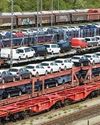
Fuel Price Hike, Supply Chain Disruption Hurt Festive Sales
Supply chain disruptions and fuel price hikes have hurt festive sales in a big way as most auto majors posted decline in sales in October.

Seaborne coking coal offers remain range-bound
Seaborne coking coal offers moved in a narrow range in October amid global supply tightness and healthy spot demand.
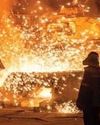
Global crude steel output down 8% in September
China manufactured 74 mt in September, fall of 21% y-o-y while India’s production went up by 7% to 10 mt.
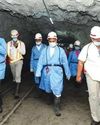
MOIL embarks on expansion projects
“Even though our country is blessed with manganese ore reserves, we import 50% of the domestic requirement. We have to lower our import dependence and save precious foreign exchange.” Ram Chandra Prasad Singh, Steel Minister

Iron ore handled by major ports down 17% in H1
The 12 major Indian ports handled 27 mt of iron-ore during H1 of 2021, down by 17% from 33 mt recorded for the corresponding period of previous year.
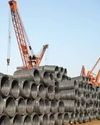
Shrinking China output to boost India exports
“In the third quarter of 2021, the company actively responded to the pressure from external policies, such as production curtailment and dual control system on energy consumption and intensity, as well as coal resource shortage and surging prices.” Baoshan Iron and Steel Co Ltd

Indian Railways' iron-ore handling up 25% in H1
Indian Railways in April-September of 2021 (H1) transported 84 mt of iron ore, up by 25% over 67 mt during April-September 2020.
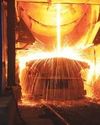
September crude steel production up 7.2% y-o-y
India’s crude steel production in September 2021 grew 7.2 percent to 9.547 million tons (mt) over September 2020 but was down by 3.2 percent from August 2021 output, provisional steel ministry data showed.

“Five enablers: way forward to sustainable cleaner steel”
Right and scalable technology, appropriate policy guidance by government, access to finance to fund transition, willingness of customers to pay for cleaner products and infrastructure for use of new technologies are the need of the hour for the sustainable and cleaner steel industry, according to Madhulika Sharma, Chief Corporate Sustainability, Tata Steel.